‘Nowhere is safe’: A photographer’s perspective on the Middle East conflict
Photographer Kate Geraghty returns to the Middle East to show the human toll of a conflict causing grief, loss and anger.
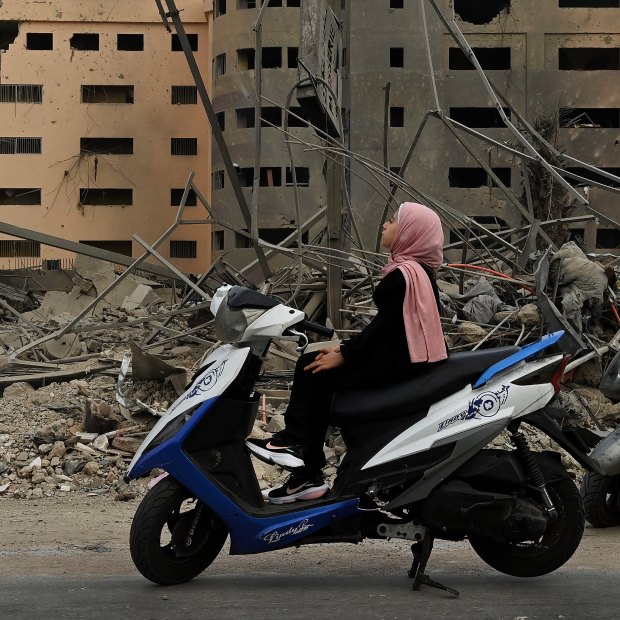
Manessa Ali, 10, surveys the damage in Dahiyeh, Beirut, in the aftermath of the October 5 Israeli strike on a medical facility on the airport road.Credit: Kate Geraghty
A city skyline punctuated with plumes of smoke from airstrikes, destroyed homes and lives, mass evacuations, the scream of ambulance sirens in the streets and emergency services digging through debris to find human remains. These are the scenes Paul McGeough and I witnessed and reported on 18 years ago during the 2006 Lebanon War. I have visited Lebanon many times since, but I never thought I would return to document these same scenes, this time with The Age and Sydney Morning Herald foreign affairs correspondent Matthew Knott.
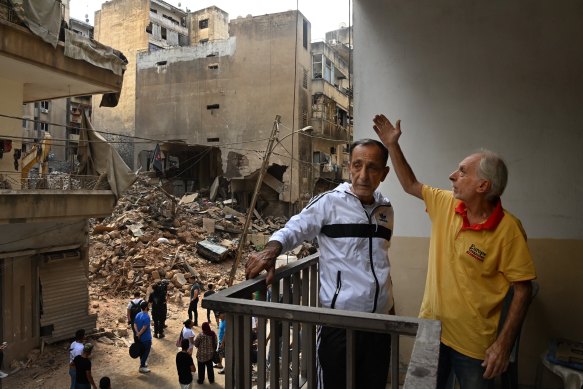
Twins Jamal and Mohammed al-Sheikh on the balcony of their damaged apartment.Credit: Kate Geraghty
Once again, there is mass displacement. I remember sitting in 2006 with colleagues on the rooftop dining area of our hotel in Tyre, grabbing leaflets being dropped by the Israel Defence Forces’ helicopters warning people to stay indoors or of an imminent attack. Now, the IDF gives forced evacuation orders via text or announcements on social media platforms, sometimes giving civilians just 40 minutes to leave their homes before they are destroyed by missiles.
On another recent trip to Israel, we spoke with families whose loved ones were still being held hostage after last year’s October 7 attack by Hamas. We visited Kibbutz Be’eri, a site of one of the worst massacres on that day, and saw how the residents were struggling to rebuild their lives after so much destruction and trauma. Nearby, on the grounds of the Nova musical festival, where an estimated 364 people were killed on October 7 last year, we could hear the sound of rockets being fired in Gaza just a few kilometres away. After more than a year of fighting, Gaza remains inaccessible to foreign journalists.
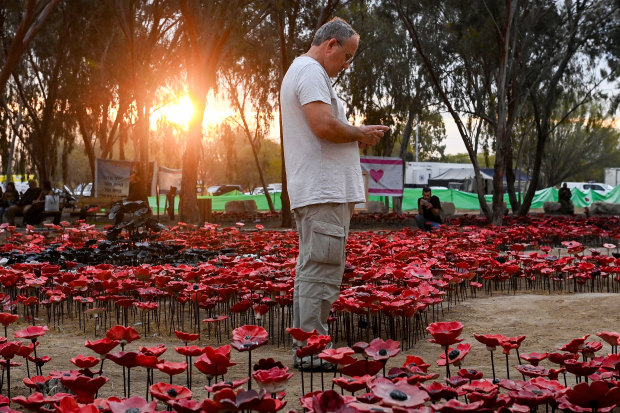
On the first anniversary of the October 7 Hamas attack, a man stands among a memorial installation at the site of the Nova music festival where 324 people were killed on October 7, 2023.Credit: Kate Geraghty
We also visited towns in northern Israel close to the border with Lebanon, where the vast majority of residents have been evacuated for a year. However, some determined holdouts – such as Luba Gershenzon, an Uzbekistan-born grandmother who hosted us in her home – refuse to leave.
Overall, there is a sense of daily tension, with air raid sirens regularly going off, but normal life goes on in much of the country. In Lebanon, normal life has ground to a halt.
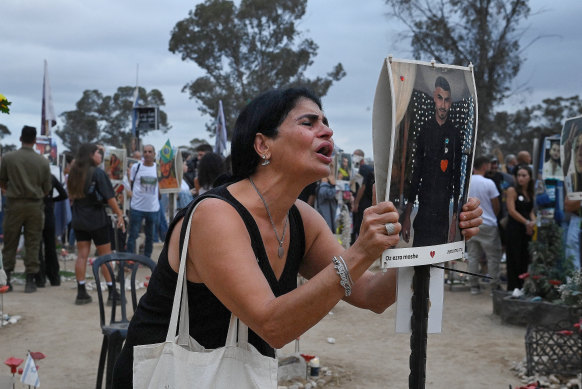
Rachel Moshe, of Holon, mourns her son, Oz Ezra, at his shrine at the site of the Nova music festival.Credit: Kate Geraghty
Nowhere is safe
In 2006, there were areas of the country that were safer than others, such as Christian towns and most of northern Lebanon. Now, nowhere is safe, with unpredictable IDF strikes on random locations they deem as targets.
One of these was the village of Aitou, north of Beirut, where Matthew and I visited to report on the aftermath of an Israeli airstrike on a house that killed 22 displaced civilians, including a six-month-old baby. The death toll may have risen because emergency services were still looking for remains during our visit.
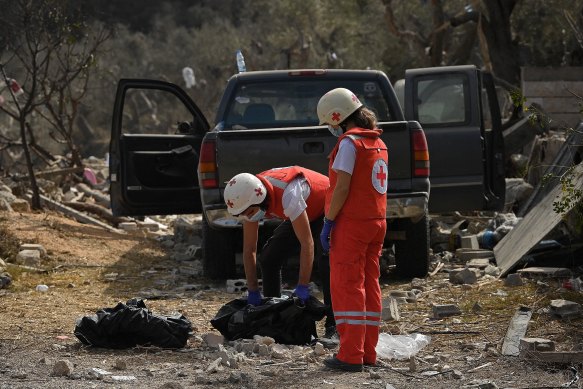
Red Cross members recover the remains of a baby at the site of the strike in the village of Aitou in northern Lebanon.Credit: Kate Geraghty
These deaths are among the 2593 people killed in Lebanon by the Israeli military since the start of the latest conflict – most have been killed in recent weeks.
The hospitality the Lebanese are renowned for comes in the form of apologies by two elderly twin brothers who wish they could offer a meal as we sit in their damaged, dust-filled lounge room looking out over emergency services as they remove rubble to try to find the bodies of three people missing. The brothers describe the moment the apartment building across the street was completely destroyed by an IDF airstrike days ago.
Schools are again being used to house those who have fled the violence. About 1.5 million people displaced from the southern suburbs of Beirut, southern Lebanon and the Bekaa Valley are living in classrooms. Children entertain themselves by playing football and singing as their parents recount to us how they fled with only the clothes on their backs and have no way of knowing if their homes remain intact.
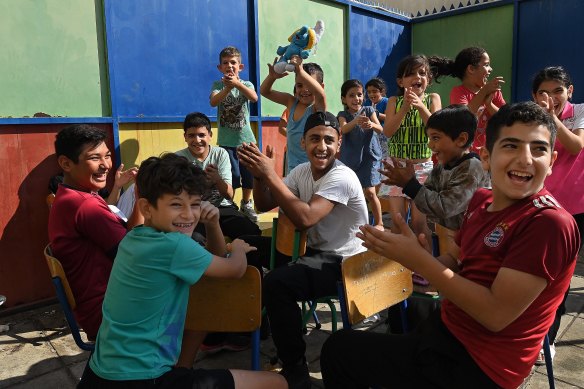
Displaced children sing at Sobhi el-Saleh Public School in the Bir Hassan suburb of Beirut. Credit: Kate Geraghty
One thing that is different this time is Syrian refugees who sought shelter and safety in Lebanon recount how they fled the war in Syria in the same manner. Thousands of the almost 1 million Syrian refugees are fleeing Lebanon and returning to the war in Syria.
Those who cannot find accommodation in schools or with family and friends live in makeshift shelters on Beirut’s famous Corniche, on beaches and in Martyrs’ Square. Local non-government organisations provide meals, clothing, bedding and medical care.
There is a distinct feeling by those we speak with in Beirut that it is worse this time. Friends have evacuated their children to neighbouring countries as they, too, contemplate leaving for the first time. With no diplomatic solution in sight, the people of Lebanon brace themselves for rising numbers of dead and wounded as the intensity of IDF strikes increase.
Kate Geraghty is a photojournalist at The Sydney Morning Herald. She has covered conflict zones around the world and won multiple awards including the Gold Walkley in 2017.

The aftermath of the el-Basta airstrike in Beirut.Credit: Kate Geraghty